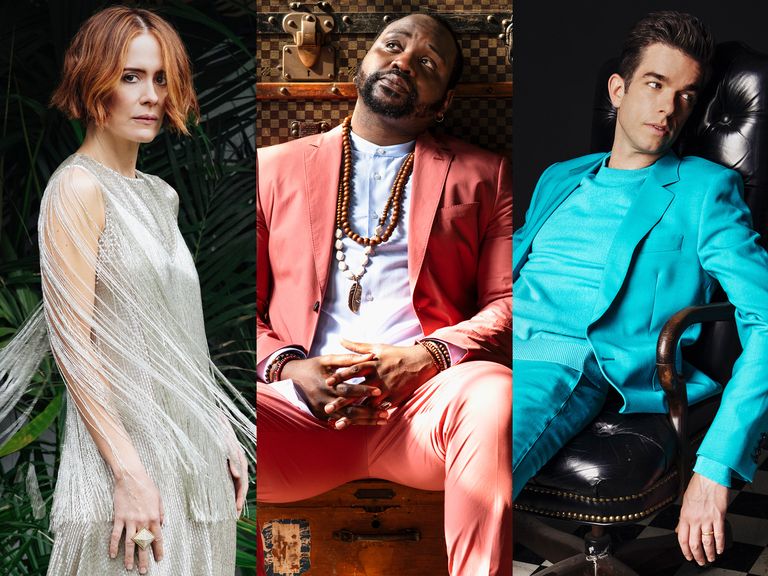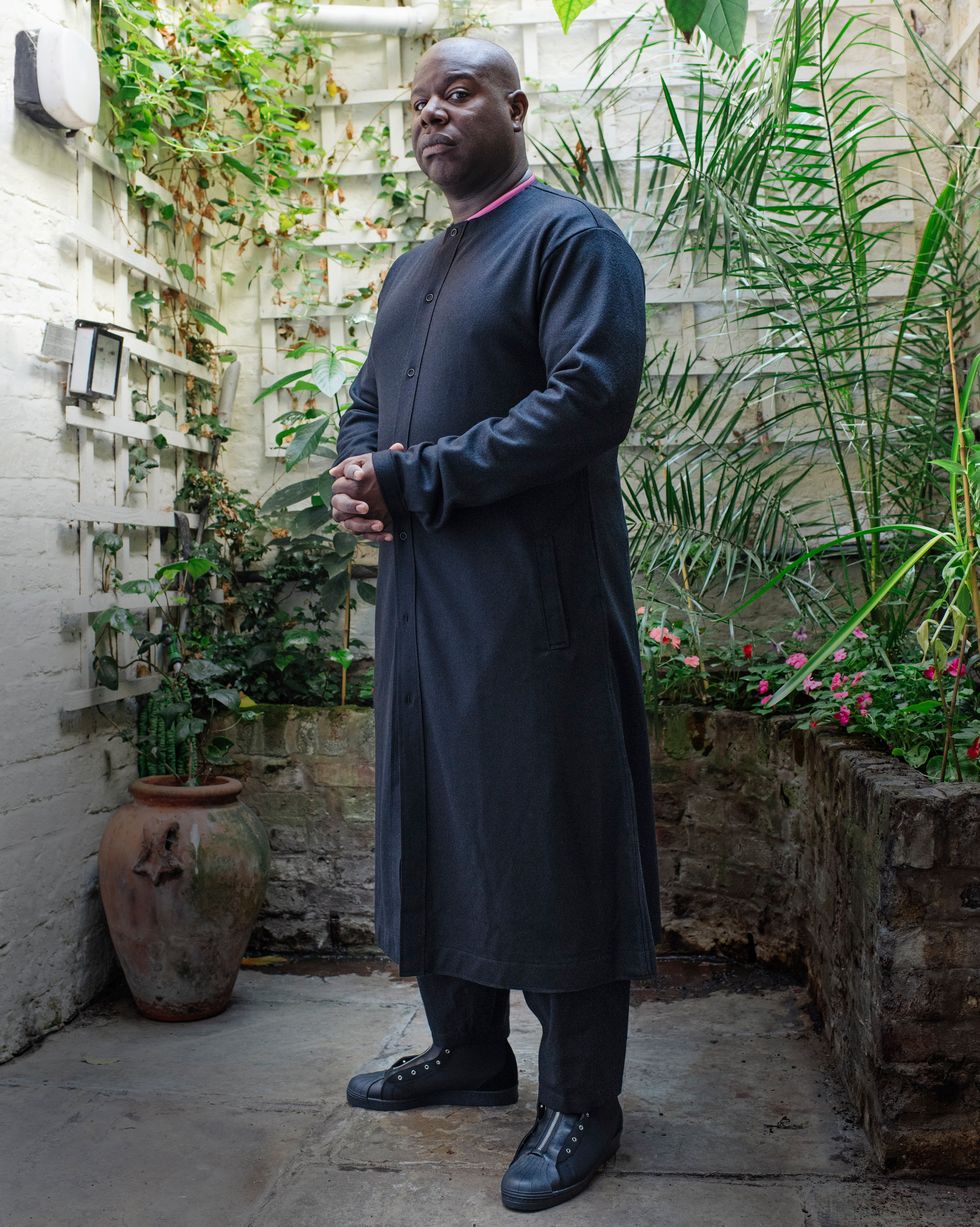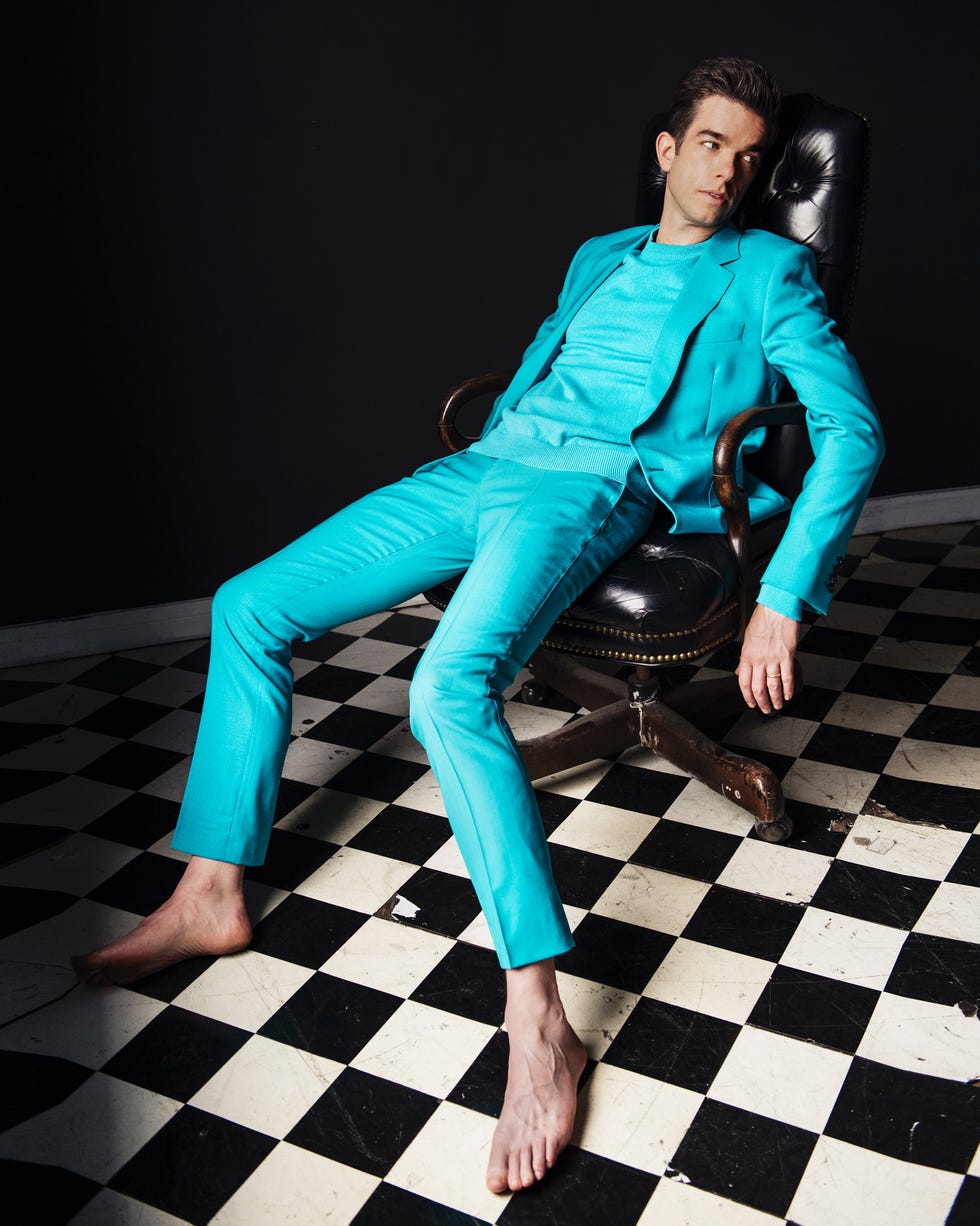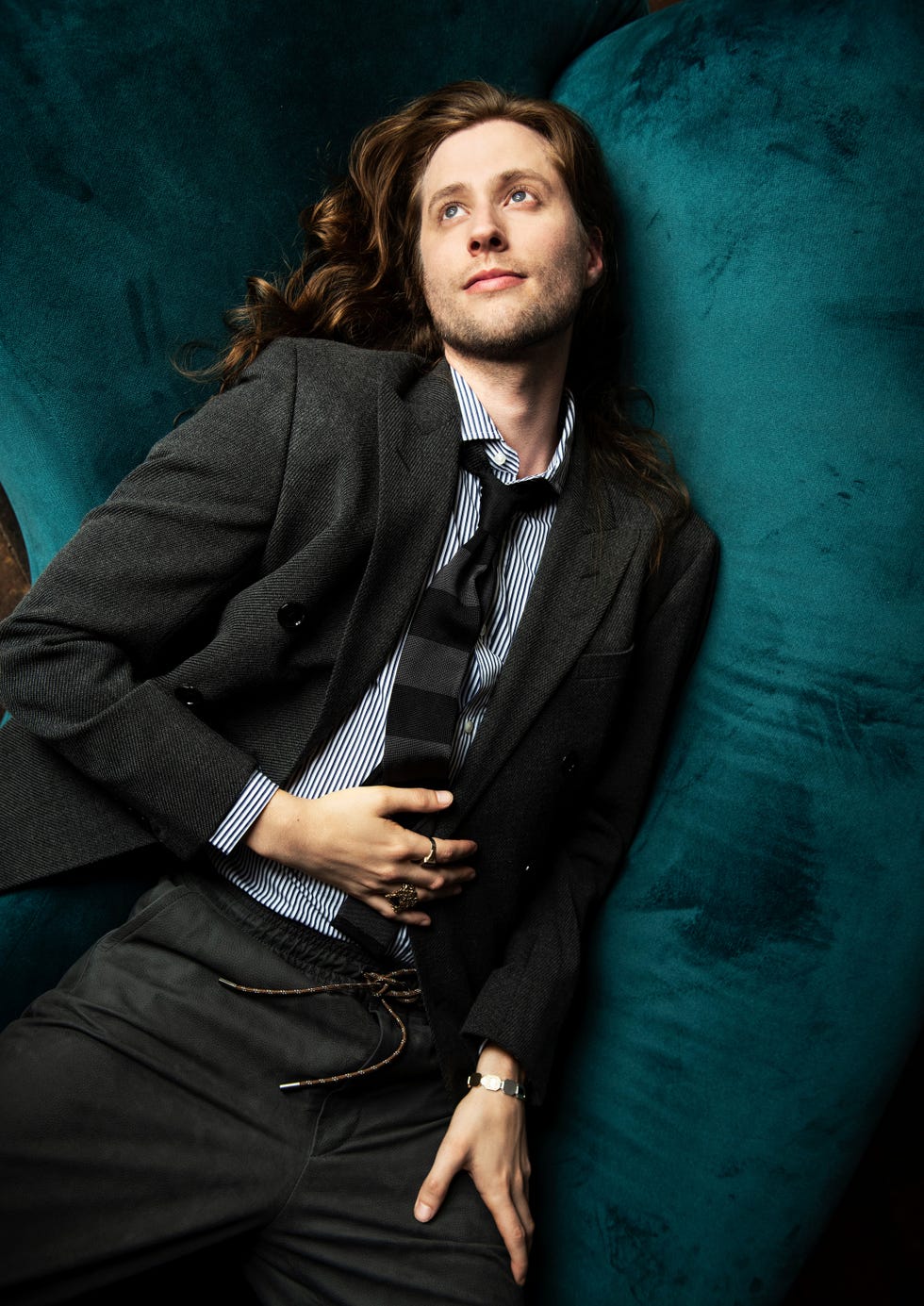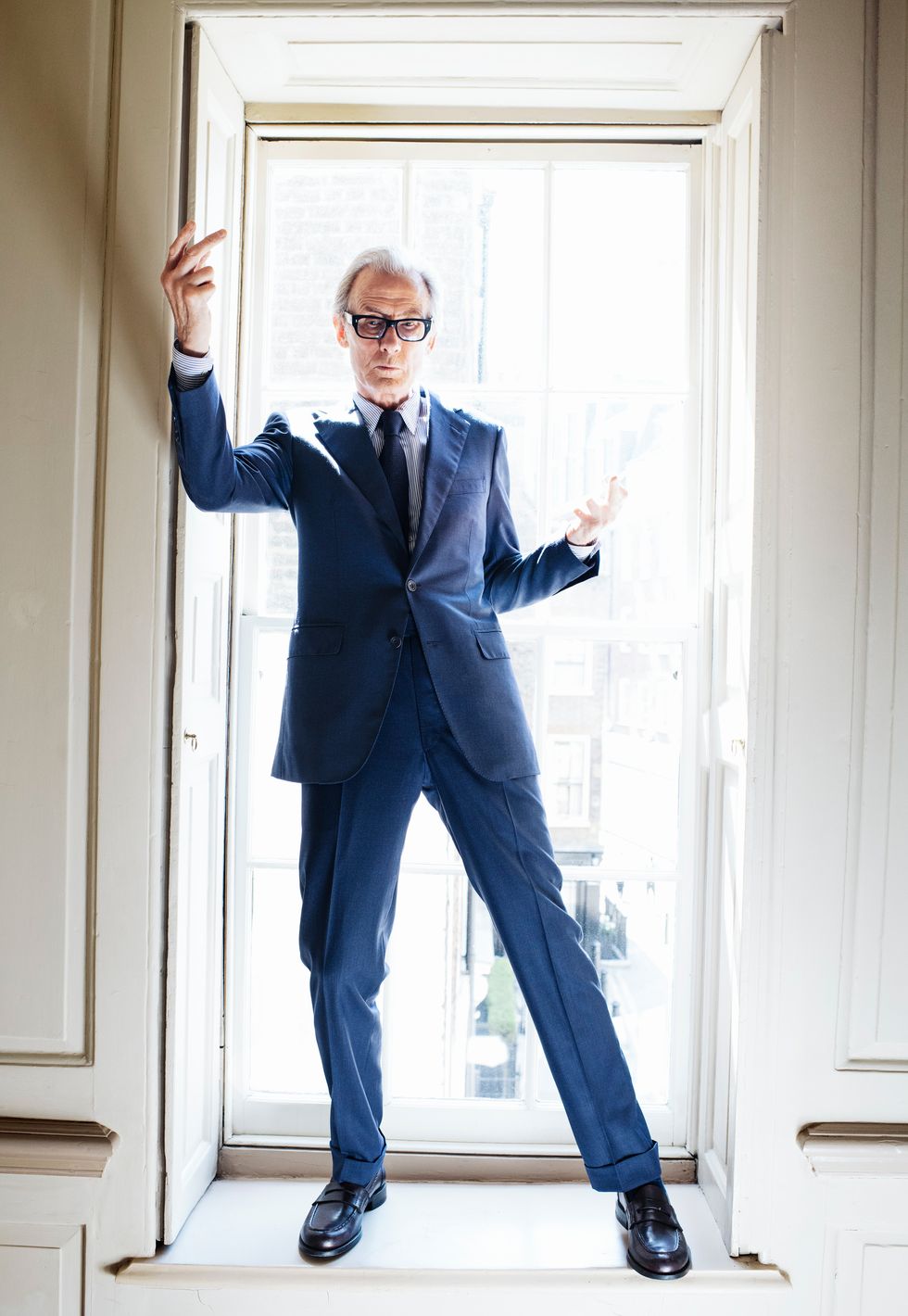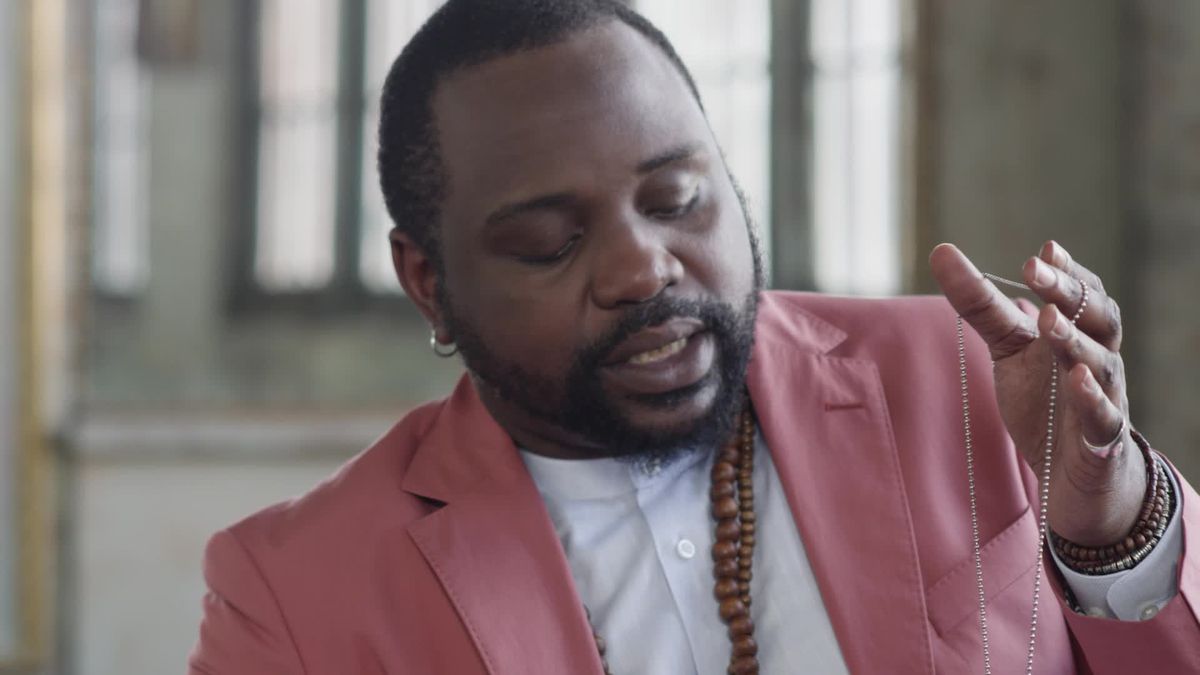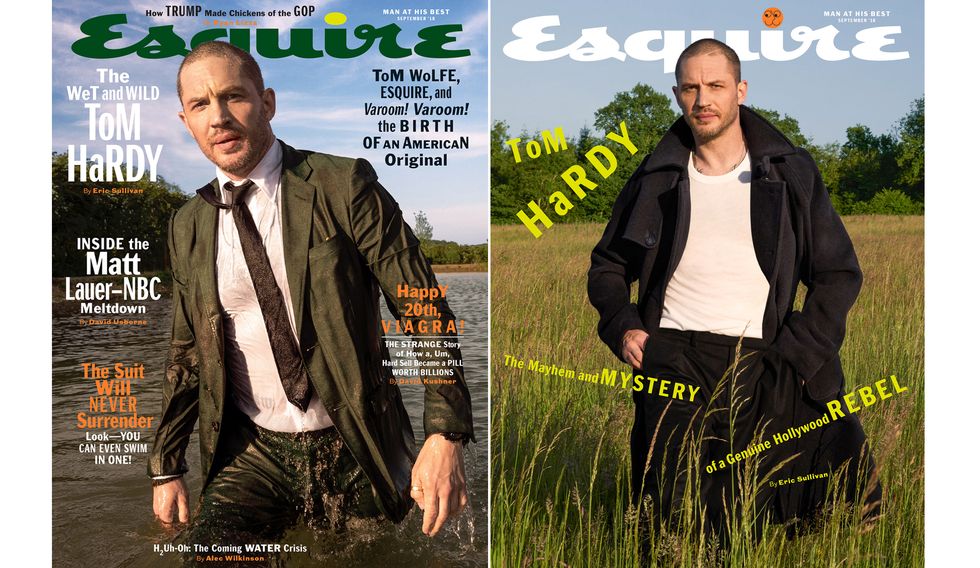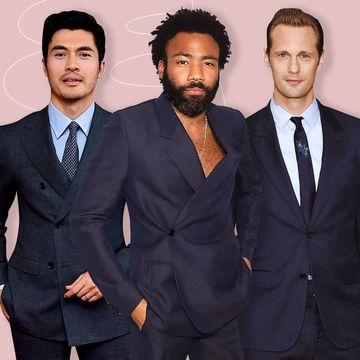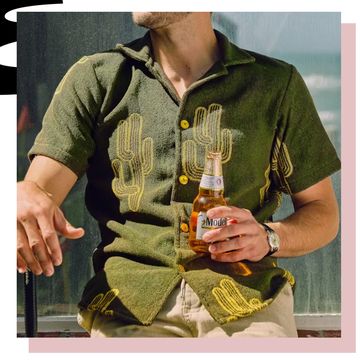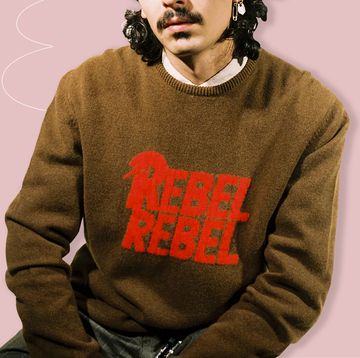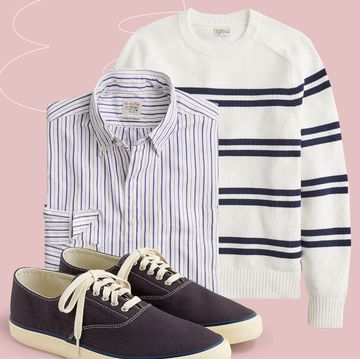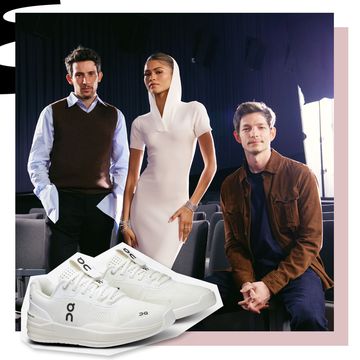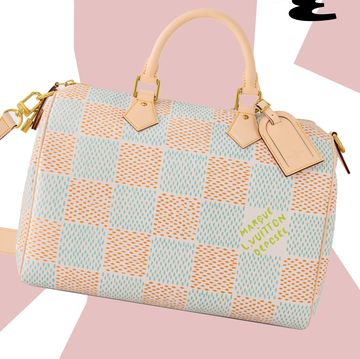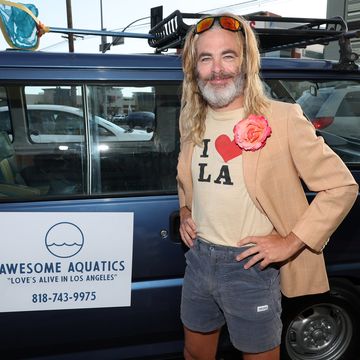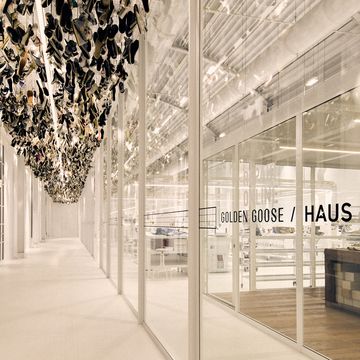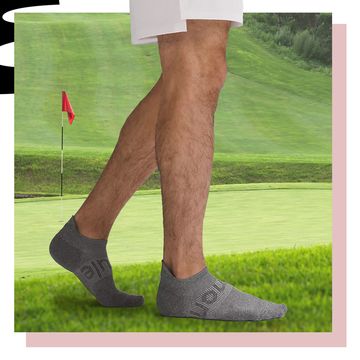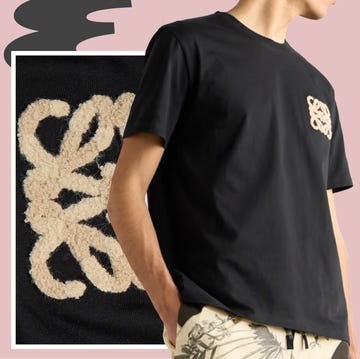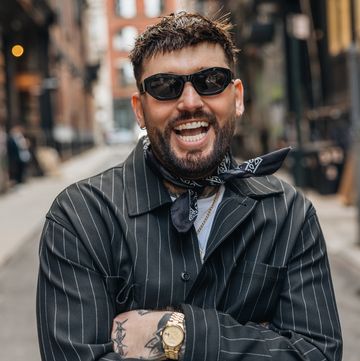Somewhere along the way, guys all started dressing alike. And they look sharp, sure. But also...safe. Which is why we’re here to lift up the rule breakers, the renegades. The ones who can pull off a salmon-colored suit or a bleached-blond MOHAWK without batting an eye. Here's to the eight men (and one woman) who prove that there’s a lot to be said for dressing dangerously.
The Exacting Eye
Steve McQueen, Director, 48
Style isn’t just about what you’re drawn to—it’s about where you come from. That’s director Steve McQueen’s take. “I’m a working-class Londoner,” he says. “When you think of London, you think of rockers, punks, skinheads. It’s a cross section of West Indian and Jamaican influence, as well as white working class influence. The three-quarter pants, that’s Jamaican, and because of the skinheads, the close-cropped hair—there’s a crossover. Rastas were a big thing, too—their scarves—and gay culture. I used to hang out on Old Compton Street, basically looking at the parade of different people. This was when SoHo was full of students. It was a very hot spot at that time in the nineties, with people experimenting with clothes. I used to sit looking at people going by and at what they were wearing. It’s very London, whatever I do.” It’s fitting that McQueen prefers clothing by designer Yohji Yamamoto, whose avant-garde approach taps into that same experimental energy.
“There’s an ease with his clothes, and a kind of movement interpreted in the fabric or in the cut. It’s very much matched to me and my body,” says McQueen, who walked the runway for Yamamoto in 2008.
The director has unveiled visionary films in theaters and art installations in swanky galleries for more than two decades now, from quiet, searing works like Shame to the unflinchingly brutal 12 Years a Slave (which won the Oscar for Best Picture). You might expect someone with McQueen’s success to resist change, but you’d be underestimating him. Up next is something entirely new. Widows, which he adapted from a British television show with Gone Girl author Gillian Flynn, will see a stacked cast of women conspiring to settle a debt from their dead husbands’ crimes. It’s a different story for McQueen to tell and a chance to take his directorial style in new directions.
“I’m looking for truth in whatever I do,” he says. “I don’t like the idea of putting a stencil on a narrative. I want the narrative to tell me how it wants to be seen.”
—Adrienne Westenfeld
The Sharpest Wit in the Business
John Mulaney, Comedian, 35
John Mulaney remembers the exact moment he decided to upgrade his stand-up uniform. He was performing in Atlanta, wearing the same flannel-and-jeans outfit as everyone in the audience. “I thought, Oh! There’s no reason I should be talking up here,” he says. So while filming his first Netflix special, New in Town, he decided he’d try out some tailoring. “It was funny to me to be a twenty-eight-year-old in a suit, yelling at everyone.”
Mulaney’s had an epic run ever since, including national tours, a Broadway run alongside Nick Kroll in Oh, Hello, voice work on the raunchy puberty comedy Big Mouth, and two more acclaimed stand-up specials. For his latest, the Emmy-nominated Kid Gorgeous, he sold out Radio City Music Hall for all seven engagements. You can’t attribute all that success to good tailoring, but something about his clothes tugs at the tensions in his comedic style: formal, then absurd. Wholesome, then suddenly dark. The comedian likes suits from Paul Smith for their fit, and because they come in shades that folks can spot from the cheap seats. “They have a great variety of popping-up-in-front-of-dark-curtains-colored suits,” he says.
Not that a suit should be a gimmick. If anything, Mulaney thinks guys should wear them more often.
“If you’ve got a blazer, a dress shirt, dress shoes, and then you put on jeans? Just wear a suit,” he says. “People say, ‘I don’t want to look too dressy,’ but unless it’s a wedding that insists everyone dress like Edward Sharpe and the Magnetic Zeros, no one’s going to be upset.”
—Jon Roth
The Postmodern Pop Star
Matt Healy, Musician, 29
The way he moves across the concert stage—strutting, swaggering, shirtless—you could peg Matty Healy, frontman of Brit group The 1975, as rock ’n’ roll’s second coming. But Healy’s got no interest in re-creating the past. He may have rock-god charisma, but he’s topped the charts with a distinctly millennial savvy.
Take The 1975’s sound. It’s a genre-hopping mash-up that references everyone from Talking Heads to One Direction. Tracks vary wildly in sensibility because the band aims to write songs for the streaming generation rather than monumental albums. “We create in the way we consume,” Healy says. And that onstage persona? It’s more impersonation than emulation. He has said that no one can be an unironic rock star today. Healy favors cool-kid designers like Raf Simons and Hedi Slimane, but when asked about personal style icons, he’s characteristically unbound by era, aesthetic, or gender. “There’s too much to choose from,” he says. “There’s people who I think are chic as fuck, though. Michelle Pfeiffer in the nineties. Seal in the ‘Crazy’ video. Jackie Kennedy. Nick Cave.”
This fall, fans will get more of Healy’s reference-rich invention with The 1975’s new album, A Brief Inquiry into Online Relationships, followed by yet another album in the spring. One thing Healy unironically shares with the outsized rock legends of yore? The conviction that more is more.
—J. R.
The Red-Carpet Chameleon
Sarah Paulson, Actress, 43
Is there any role Sarah Paulson can’t inhabit? She’s played conjoined twins, a medium, a witch, and a journalist—and that’s just in the American Horror Story universe.
The actress resists categorization on the red carpet, too, where she’s shaking up Hollywood’s predictable fashion scene. At the London premiere of Ocean’s 8, she wore a pink Valentino gown that was equal parts arty and feminine, then went punk for the New York premiere in an electric lime-green Prada number. “I look like a giant highlighter,” she later joked. We call it a bright spot. If anyone knows Paulson at her core, it’s Ryan Murphy, with whom she’s collaborated nonstop since Nip/Tuck in 2004. The partnership isn’t likely to end anytime soon. “He makes me feel seen,” Paulson says. “You don’t leave somewhere where you’re being celebrated and challenged. It’s like being in a marriage that works.” That marriage has garnered Paulson six Emmy nominations, and a win for American Crime Story.
Paulson’s back on the big screen next fall as part of the stellar cast of The Goldfinch. She will also return to another Murphy project—playing Nurse Ratched in a Netflix series exploring the origin story of everyone’s favorite battle-ax. We bet you’ll hardly recognize her.
—A. W.
The Hit Maker
Ludwig Göransson, Composer, Producer, 33
Style comes in stages. First, you score a few compliments. Later, friends ask, “Where’d you get that?” When you’ve really made it, people start stealing your damn clothes. Swedish composer Ludwig Göransson hit that last level at his bachelor party, when he briefly left a suede Lanvin jacket—wallet inside—behind at a table. It was gone when he came back. “It was a fashion thief,” Göransson says, since someone later found his valuables. “Whoever took it just wanted the jacket.”
Also in demand from Göransson? His virtuosic musical abilities. He started out day- jobbing the scores of New Girl and Community and has since evolved into an indispensable collaborator to the likes of Childish Gambino, Ryan Coogler, and Chance the Rapper. Not necessarily what you’d expect from an artist who hails from the land of EDM. (You can thank Donald Glover for the introduction to rap.) Göransson mashed modern hip-hop into the Rocky theme for Creed, laid down Black Panther’s thumping afrobeats, and coproduced Gambino’s next-level hit “This Is America,” which is why you could see him in anything from a dashiki to a bomber jacket. “When I go into the studio, I’m trying to dress up to the way I want my music to sound,” he says. “It makes it easier to connect and create.”
—Brady Langmann
The Quick-Change Artist
Bill Nighy, Actor, 68
If you want Bill Nighy to look his best, put him in a suit. He’s got the build to carry them off with ease. But in the course of his five-decade career, the Golden Globe–winning actor has learned a hard truth: The costume department isn’t there to make him look good. Take the motion-capture suit that transformed Nighy into half-man, half-mollusk Davy Jones in the Pirates of the Caribbean series. “I had to wear computer pajamas with white bubbles all over them and a white skullcap with a white bubble on top,” Nighy says. “People pitied me. They would avert their eyes because I looked sad, and I couldn’t have agreed more. I knew how sad I looked.”
The actor’s other roles have run the sartorial gamut, from his Tony-nominated performance in Skylight (charcoal suiting) to his turn as a word-vomiting rocker in Love Actually (snakeskin pants). Offstage, he opts for simple, navy-colored dress clothes. “It occurred to me that I’ve spent most of my life just slightly overdressed,” he says. “Jarvis Cocker had a good response when asked why he always wore a suit. He said, ‘Well, you never know who you’re gonna bump into.’ ”
—B. L.
The Scene-Stealer
Brian Tyree Henry, Actor, 36
The best piece of direction that Brian Tyree Henry, a Yale School of Drama alumnus, ever received came from South Park’s Trey Parker during a rehearsal of the Broadway musical The Book of Mormon. “I had some dialogue,” Henry says, “and at the end of it, Trey was like, ‘Cool. Now just add a bunch of fucks in there.’ ”
Henry is best known for playing Alfred, aka Paper Boi, Donald Glover’s rap-star cousin and meal ticket on FX’s Atlanta. The show’s second season (which earned Henry an Emmy nom) smartly focused on Alfred’s ambivalence about celebrity and the toll of carrying his entourage. This fall, he’ll appear in both Steve McQueen’s Widows and Barry Jenkins’s If Beale Street Could Talk. There is a scene in the Atlanta episode “Woods” in which Alfred’s girlfriend tries to persuade him to buy a pair of velvet slippers. Henry would need no convincing. The actor is given to bold prints, statement jewelry, and velvet evening jackets. “When I enter a room, I want you to know I entered,” he says.
When asked about his acting idols, his answer is just as decisive (and unexpected). “Laurie Metcalf is the—capital THE, underline the—actor that I was like, ‘I want to be her.’ ”
—Ash Carter
The Illusionist
Lucas Hnath, Playwright, 38
Few theatrical moments match the conclusion of Henrik Ibsen’s A Doll’s House, when housewife Nora Helmer slams the door on her marriage and her children. For decades, playwrights have taken unsuccessful stabs at dreaming up what happened next. Then came Lucas Hnath, who took his audacious sequel, A Doll’s House, Part 2, all the way to Broadway, and a landmark eight Tony nominations. A gutsy high-low fusion, the new play finds Nora knocking on that same door fifteen years later, a successful feminist novelist who’s come to demand a divorce.
Hnath cites his Orlando childhood as one of his greatest influences. “I grew up seven minutes from Disney World,” he says. “That acclimated me to delighting in artifice.” In his wardrobe, that translates into slim-fitting silhouettes, “self-consciously theatrical” designers like Alexander McQueen, and bohemian flourishes. All that, and he has one of the most luxurious manes on the Great White Way. “I hate that it’s become a bit of a trademark, but I do like it long,” he says. Every artist needs a signature.
—A. W.
The Transformer
Raúl de Nieves, Artist, 34
An artist can find their inspiration anywhere. Raúl de Nieves found his in a pair of heels. “I thought it would be funny to wear them to a punk show. People called me Grandma, but it also made me more approachable, because it started a conversation,” he says. He then started incorporating them into his artwork—covering the shoes with cheap plastic beads until they took on their own organic shapes. “I’m morphing these everyday objects into something more magical,” de Nieves says. The artist grew up in Michoacán, Mexico, a place he describes as a “huge artisan community” where craft truly was an everyday practice. He immigrated to San Diego at nine, and as an adult skipped art school, saving the money and teaching himself. He developed a wide-ranging practice rooted in sculpture and performance art.
In 2017, his reputation spiked with his inclusion in the Whitney Biennial. There he created a thirty-eight-foot stained-glass installation flanked by elaborately costumed figures and beaded sculptures. Innovative as ever, de Nieves crafted his “stained glass” out of tape and colored paper. The finished product was packed with imagery by turns sacred, celebratory, and surreal.
These days, de Nieves wears more sneakers than party pumps—you need sensible shoes to travel. In September, he’s got shows in L. A. and Paris, and he’s making plans for even bigger projects. “Working on that scale pushed me not to have limits,” he says of the Whitney show. “I made that stained-glass window by myself in a basement with no natural sunlight. I believed that it would work, and it did. And it was beautiful.”
—J. R.
